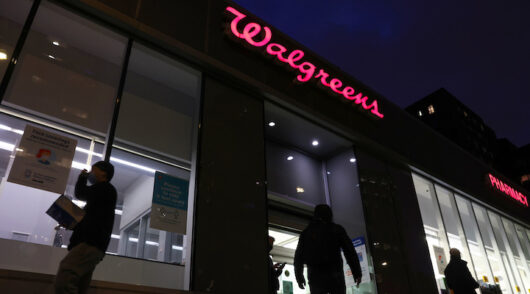Walmart has ended its year with a powerful set of numbers that show despite economic and competitive pressure, it remains the leader of the pack in retail.
Overall sales grew by a robust 7.3 per cent, supported by a strong 8 per cent uplift in US comparables. Admittedly, the growth comes off the back of a relatively weak performance in the prior year, but this does not take away the fact that over the past three years, the company has grown its revenue by 15.8 per cent or $22.4 billion in monetary terms.
Of course, a lot of Walmart’s solid results are a consequence of inflation – especially in grocery and consumables where comparable sales are up in the mid-teens range. This has proved something of a double-edged sword as, while it flatters revenue numbers, it is less helpful to the bottom line where operating profit declined by 5.5 per cent overall and grew by a relatively modest 3.8 per cent in the US.
However, Walmart can cope with inflationary pressures far better than many other retailers simply because of its enormous buying power. It is also benefitting from an influx of new customers, including those at the higher end of the income spectrum, who are seeking lower prices and strong value for money: which remains one of Walmart’s core differentiators and most important messages.
Over the holiday period, GlobalData’s research indicates that Walmart increased its share of shoppers in food as more people turned to it for good value provisions. This was helped by some strong marketing and price promotion over the period. However, this success did not replicate itself in non-food, especially in stores. Despite more people coming to Walmart, fewer shopped for non-food items.
Among lower-income, regular shoppers this was a consequence of tighter budgets and some cutting back on discretionary purchases. Among Walmart’s higher-income customers, including new converts, many eschewed the store for general merchandise, electing to shop and spend elsewhere. Ultimately this resulted in a mid-single-digit decline in comparable sales and, across some categories, sales were also down on a two-year basis.
Unfortunately, there is not so much that Walmart can do about weaker demand among its core shoppers. However, to convert more middle- and higher-income segments it needs to improve both its assortments and the way it presents them in-store. The problem with Walmart in general merchandise is that it acts and thinks like a grocery player – merchandising in a very functional fashion with little to no flair. This is not enticing or appealing to many shoppers and makes assortments seem uninteresting, which reduces conversion and purchasing rates.
Walmart seems to recognize this which is why it is committed to improving store environments. To date, it has rolled out a handful of remodeled stores, including its North Bergen SuperCenter in New Jersey. These refreshed shops elevate visual merchandising and are encouraging shoppers to browse for longer and have a positive impact on sales.
However, Walmart needs to commit to rolling out this remodel much further in the year ahead if it is to gain serious traction in general merchandise. This may be difficult to justify in the present sluggish environment, but it is a critical element of long-term success – including attracting more younger shoppers.
In some ways, online shows the potential. Here sales rose by 17 per cent driven by both grocery and non-food. This shows there is interest in Walmart’s general merchandise offer, but the success now needs to be replicated in stores.
As Walmart won’t be able to rely on food inflation to drive sales and customer numbers forever, making the necessary improvements to non-food now is an important part of protecting future growth.






